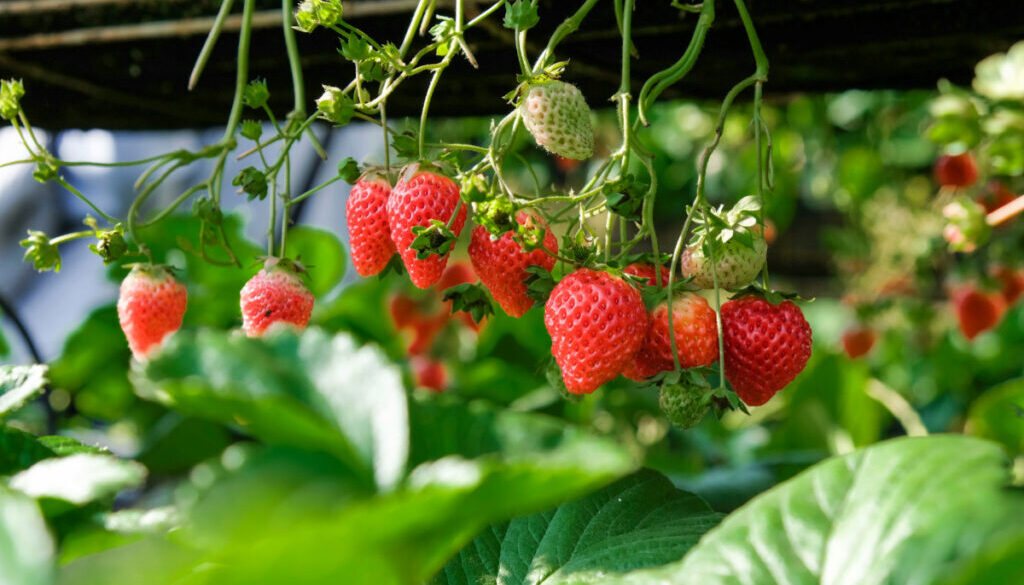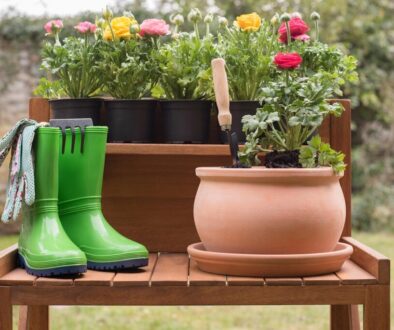How to Grow an Edible Garden: Fresh Fruits and Herbs at Your Fingertips
Creating your own edible garden is a rewarding experience that provides fresh produce right at home. Whether you have a small patio, balcony, or backyard, you can grow delicious strawberries and aromatic herbs with minimal effort. Here’s how to do it.
How to Grow Strawberries in Pots or Small Beds
1. Choosing the Right Strawberry Variety
When growing strawberries in pots or small beds, selecting the right variety is key. Everbearing strawberries produce fruit throughout the growing season, making them perfect for container gardening. June-bearing strawberries yield a large harvest in early summer, while day-neutral varieties produce consistently, even in unpredictable weather. Consider your climate and available space before selecting a variety to ensure the best possible yield.
2. Preparing the Perfect Container or Bed
Strawberries thrive in well-draining soil with plenty of organic matter. If using a container, ensure it has drainage holes and is at least 12 inches deep. Raised beds offer excellent drainage and allow the roots to spread easily, reducing the risk of rot. Adding compost or aged manure before planting will improve soil fertility, ensuring robust plant growth. Strawberries prefer slightly acidic soil with a pH between 5.5 and 6.8.
3. Planting and Spacing for Maximum Growth
Space strawberry plants about 8-12 inches apart to ensure adequate air circulation and prevent fungal diseases. Bury the roots just below the surface, keeping the crown (where leaves meet roots) above the soil. Water thoroughly after planting to help the roots establish quickly. Consider using straw mulch around the plants to retain moisture, suppress weeds, and prevent fruit from touching the soil, which can lead to rot.
4. Watering and Feeding for Juicy Berries
Strawberries need consistent moisture, especially during fruit production. Water at the base of the plant to keep the leaves dry and prevent disease. Apply a balanced organic fertilizer every few weeks to encourage healthy growth and sweet, flavorful fruit. Avoid overwatering, as soggy soil can cause root rot. Drip irrigation or a soaker hose can provide consistent moisture while minimizing water waste.
5. Protecting Your Strawberry Plants
Birds and insects love strawberries as much as you do! Use netting or row covers to protect the fruit. If growing in a small bed, consider planting marigolds or garlic nearby to deter pests naturally. Keep an eye out for slugs, and handpick them if necessary. Strawberries are also susceptible to fungal diseases such as powdery mildew; ensure good air circulation and avoid overhead watering to prevent issues.
6. Winter Care and Overwintering Your Plants
Strawberries are perennials, meaning they return year after year if properly cared for. In colder climates, mulch your strawberry beds with straw or pine needles to protect them from harsh winter conditions. If growing in pots, consider moving them to an unheated garage or covering them with a frost blanket. Trimming back old leaves before winter will help plants conserve energy and produce stronger growth in the spring.
7. Harvesting and Enjoying Your Bounty
Pick strawberries when they’re fully red and slightly soft to the touch. Morning is the best time for harvesting, as the berries are cool and firm. Handle them gently to avoid bruising. Enjoy them fresh, add them to smoothies, or make homemade jam for year-round enjoyment. Refrigerate harvested strawberries immediately to preserve their freshness.

The Best Herbs to Grow for Fresh Cooking Year-Round
1. Basil: The Ultimate Kitchen Staple
Basil thrives in warm, sunny conditions and is perfect for container gardening. Pinch back the leaves regularly to encourage bushy growth and prevent flowering. Keep a pot of basil on your kitchen windowsill for fresh leaves anytime you need them. Basil is best grown in well-draining soil with regular watering, but avoid overwatering to prevent root rot. Frequent harvesting promotes new leaf production, ensuring a continuous supply.
2. Rosemary: A Fragrant and Hardy Herb
Rosemary is a drought-tolerant herb that grows well in pots or directly in the ground. It loves full sun and well-draining soil. Regular pruning keeps the plant healthy and encourages new growth, ensuring a steady supply of aromatic sprigs for roasting meats and vegetables. Rosemary does not require frequent watering—allow the soil to dry between watering to prevent root rot. A light mulch layer can help retain moisture in dry climates.
3. Thyme: A Versatile and Low-Maintenance Herb
Thyme is an easy-to-grow perennial herb that thrives in various conditions. Whether creeping along garden beds or flourishing in pots, thyme requires minimal care. Simply provide good drainage and plenty of sunlight, and you’ll have fresh leaves to add to soups, stews, and sauces all year long. Thyme is resilient to drought and does not require frequent watering. Regular harvesting encourages dense, bushy growth.
4. Mint: Refreshing and Resilient
Mint is a fast-growing herb that spreads quickly, so it’s best to grow it in a container to prevent it from taking over your garden. Water it regularly and place it in partial shade for the best results. Use fresh mint for teas, cocktails, or garnishing desserts. To control excessive growth, prune mint regularly and divide the plant every couple of years. Mint prefers moist soil but can tolerate brief dry spells.
5. Chives: Easy to Grow and Perfect for Garnishing
Chives are among the easiest herbs to grow, requiring little more than occasional watering and sunshine. Snip the leaves regularly to encourage new growth and prevent flowering. Sprinkle fresh chives over baked potatoes, salads, and omelets for a mild onion flavor. Chives thrive in both containers and garden beds, making them a great addition to any edible garden. They are also naturally pest-resistant and can help deter harmful insects when planted near other vegetables.
6. Oregano: The Go-To Herb for Italian Dishes
Oregano is a hardy perennial that grows well in containers and garden beds alike. It loves dry conditions, making it perfect for low-maintenance gardeners. Regular harvesting enhances the plant’s flavor and keeps it producing fresh leaves throughout the year. Oregano prefers full sun and well-draining soil. Avoid overwatering, as excess moisture can lead to root rot. Fresh oregano adds a robust, earthy flavor to pizzas, pasta sauces, and grilled dishes.
7. Indoor Herb Gardening for Year-Round Freshness
Many herbs, including basil, chives, and oregano, grow well indoors. Use small pots with drainage holes and place them on a sunny windowsill. Rotate plants regularly for even light exposure. Consider using grow lights during winter months to keep herbs thriving. Keep indoor herbs trimmed and well-watered, but avoid excessive moisture, which can lead to fungal growth.
Bringing Your Edible Garden to Life
Growing strawberries and fresh herbs is a fun and rewarding way to enhance your home-cooked meals. With the right plants, minimal effort, and a bit of care, you’ll have a thriving edible garden that provides delicious ingredients year-round. Whether you have a small balcony or a spacious backyard, you can enjoy fresh, homegrown produce anytime! Creating an edible garden is not only a great way to improve your diet but also an enjoyable way to connect with nature.
Happy Gardening!







